Art History: Chapter 4 - Chinese Art to 220 AD
1/20
There's no tags or description
Looks like no tags are added yet.
Name | Mastery | Learn | Test | Matching | Spaced |
|---|
No study sessions yet.
21 Terms
Neolithic Era (7000 - 1700 BC)
Golbi Desert borders the North
Trade networks from Europe & Silk Road brought ideas and influences
Extended into Korea
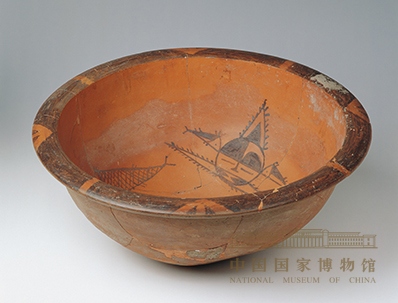
Bowl
Visual
Low intensity red hue
Round with turned out brim
Stylized fish and faces in a linear manner
Iconographic
Made in Neolithic era (civilizations, farming, & hunting animals)
Used to ensure ancestors could get an abundant catch
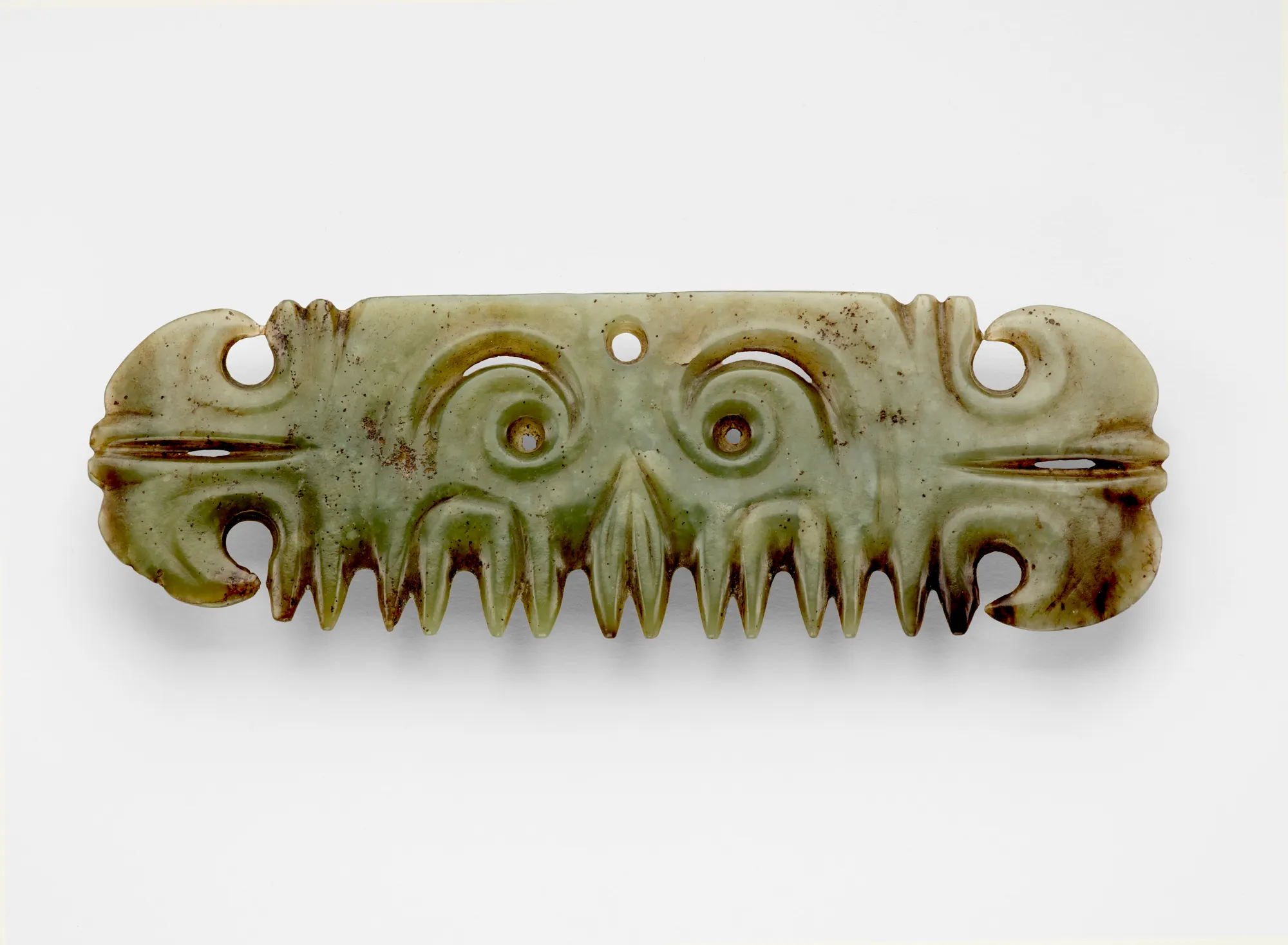
Pendant in Mask Form
Visual
Low intensity hue of green (jade)
Symmetrical eyes & eyebrows
7 pairs of teeth-like points
Hole at top middle to use as pendant
Iconographic
Made in Neolithic Era (increased civilizations)
Found positioned on deceased bodies
Symbolizes power for elite people
Shang Dynasty
Earliest dynasty
Ruled by Shang leaders in North China
Ritual practices & religions were centered around ruling
Di was diety that controlled universe & spirit
Only Emperor could communicate with Di
Loved animal designs
Bronze used to make animal vessels and other tools

Lidded Ritual Ewer (Huo)
Visual
Vase-shaped pitcher/pouring vessel
Horned bird with hooked beak at front
Wings composed of coiled dragons
Lid is decorated with two prominent animals masks (ram & buffalo head)
Stylized, naturalistic/abstract
Iconographic
Made in Shang Dynasty
Made by piece mold casting (turned mold into clay)
Held offerings that would be given to the King for favors
Zhou Dynasty (1050 - 221 BC)
Cultural similarities w/ Shang Dynasty (rituals, bronze usage, symbolism)
Believed King could rule if they carried heaven’s favor
Music/instruments were important
Inscriptions honor achievements of noblemen
Confucianism, daoism/taoism, and legalism used to create harmonious society
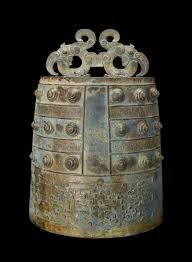
Bell (Bo)
Visual
Made of jade
Loop is two abstract birds
18 knobs in the middle w/ snakes inside
Low relief dragons at bottom of bell
Iconographic
Made in Zhou Dynasty
Signaled good government, good relationship with heaven, and great happiness with family
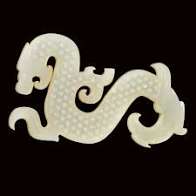
Dragon Pendant
Visual
Made of jade
Depicts stylized dragon
Use of curvilinear lines to depict motion
Iconographic
Made in Zhou Dynasty
Used for ornamental purposes
Symbolizes power, authority, and a connection to the divine
Qin (Chin) Dynasty (221 - 206 BC)
Qin Shi Huangdi became first emperor after power conquest
Created Chinese script, measurements, Great Wall, roads, etc
Huangdi was intolerant and established harsh laws to maintain power
Burned books (agriculture & medicine) that he didn’t consider useful
Death caused eventual chaos
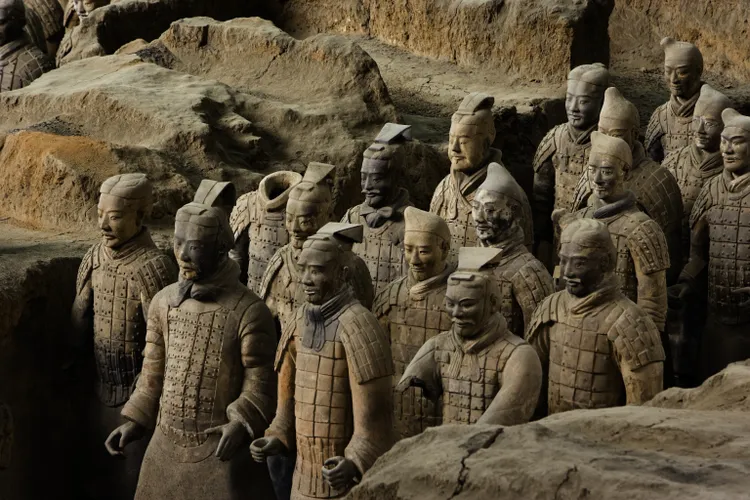
Ceramic Soldiers
Visual
Soldiers and horses made of terracotta (fired clay)
Different facial features but not realism
Entire army of life-sized soldiers
Iconographic
Made in Qin Dynasty
Symbolized emperor’s power on earth & the underworld
Created to protect Huangdi in the afterlife
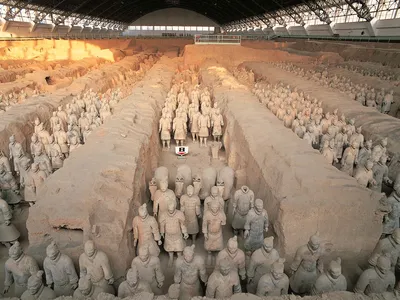
Unexcavated Tomb Complex
Visual
Contains terracotta soldiers, horses, and chariots
Has burial pits containing artifacts
Had monumental gateways for flooding protection
Iconographic
Burial mound had sacrificial rites performed for deceased ancestors
Symbolizes the power and unification of the first Emperor
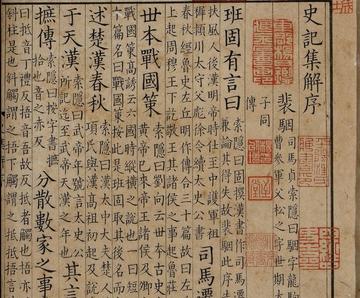
Sima Qian’s “Shiji”
Visual
Written on bamboo slip
Used brush + ink to write characters
Has descriptors of the burial chambers
Iconographic
Made in Qin Dynasty
Made to provide rulers with history of how virtuous/tyrannical rule affected governance and societal stability
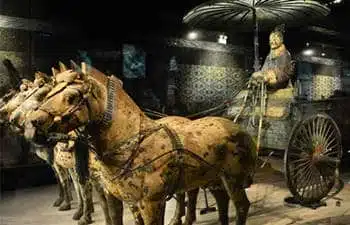
War Chariot
Visual
Chariot is made of bronze
Horses are made of terracotta
Is a skeumorph (replicate) of a wooden chariot
Man equipped with crossbow
Iconographic
Made in Qin Dynasty
Made to accompany Terracotta Army in the afterlife
Represent immense scale of the Empire and desire for protection beyond death
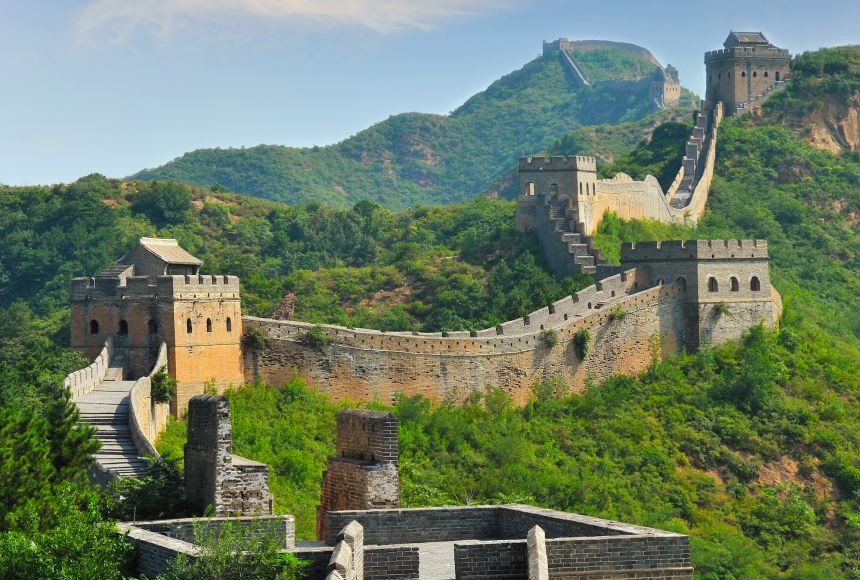
The Great Wall
Visual
Made of stone, earth, granite, brick, and limestone
Originally shorter walls put together
Contains beacons and watch towers
Iconographic
Is the largest defense fortification globally
Used smoke signals and lanterns as messages for mongrel invasions (Genghis Khan)
3000 workers died & were buried inside the wall
Can be seen at low earth orbit
Real length is unknown
Han Dynasty (206 BC - 220 AD)
Reunified China after Huangdi died, having peace and prosperity
Immortality, daoism/taoism, and confucianism were central thoughts in this Dynasty
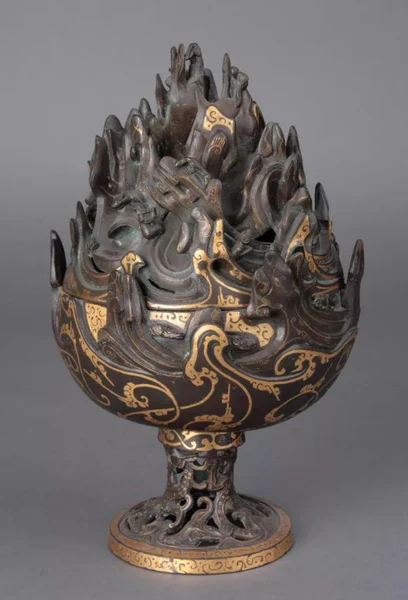
Incense Burner
Visual
Made of bronze with gold inlay
Stylized waves
Waves covered in birds, animals, and immortal figures
Iconographic
Made in Han Dynasty
Found in prince’s tomb
Depicts the land of immortals
Symbol of daoism
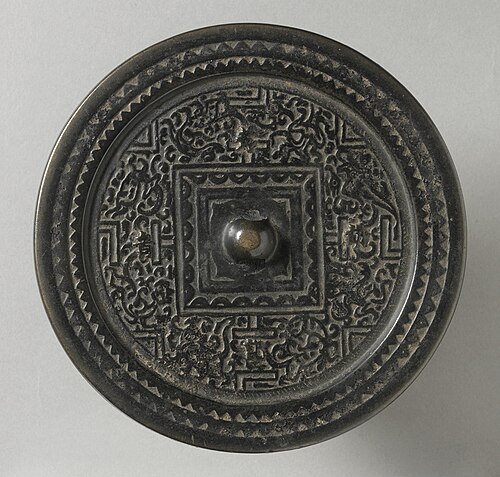
Han (TLV) Mirror
Visual
Made of bronze & has black patina
Boss in center on back
Has game board (Lui-Do)
Inner perimeter has Chinese characters representing zodiacs
Animals on four sides
Iconographic
Made in Han Dynasty
Repeated motif of T L & V symbolize heaven and earth
Gameboard associated with immortality (immortals had wings coming out of arms
Zodiacs represent the cosmics
Animals depict cardinal directions as a protective function
Mirror would reflect light on tomb and illuminate it
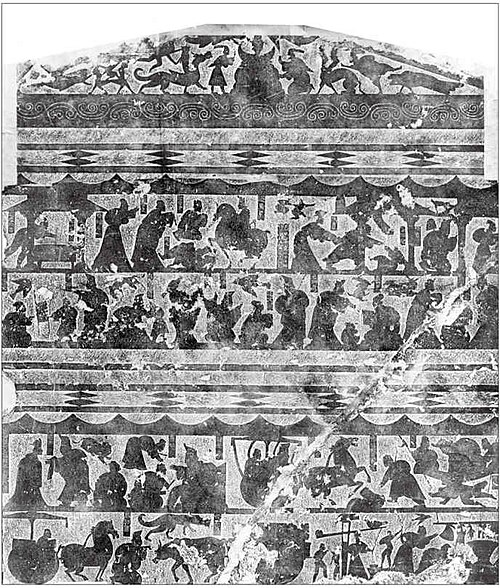
Wu Family Shrine
Visual
Rubbing of a stone relief
Figures are isolated and idealized
Space divided into registers
Depicts emperor/empress receiving visitors bowing to them
Depicts daoist legend of archer shooting sun crows
Iconographic
Made in Han Dynasty
Themes of both confucianism and daoism
Served as a place for ancestral rituals and a visual testament to the family’s power
Daoist legend represent family’s connection to authority and the universe
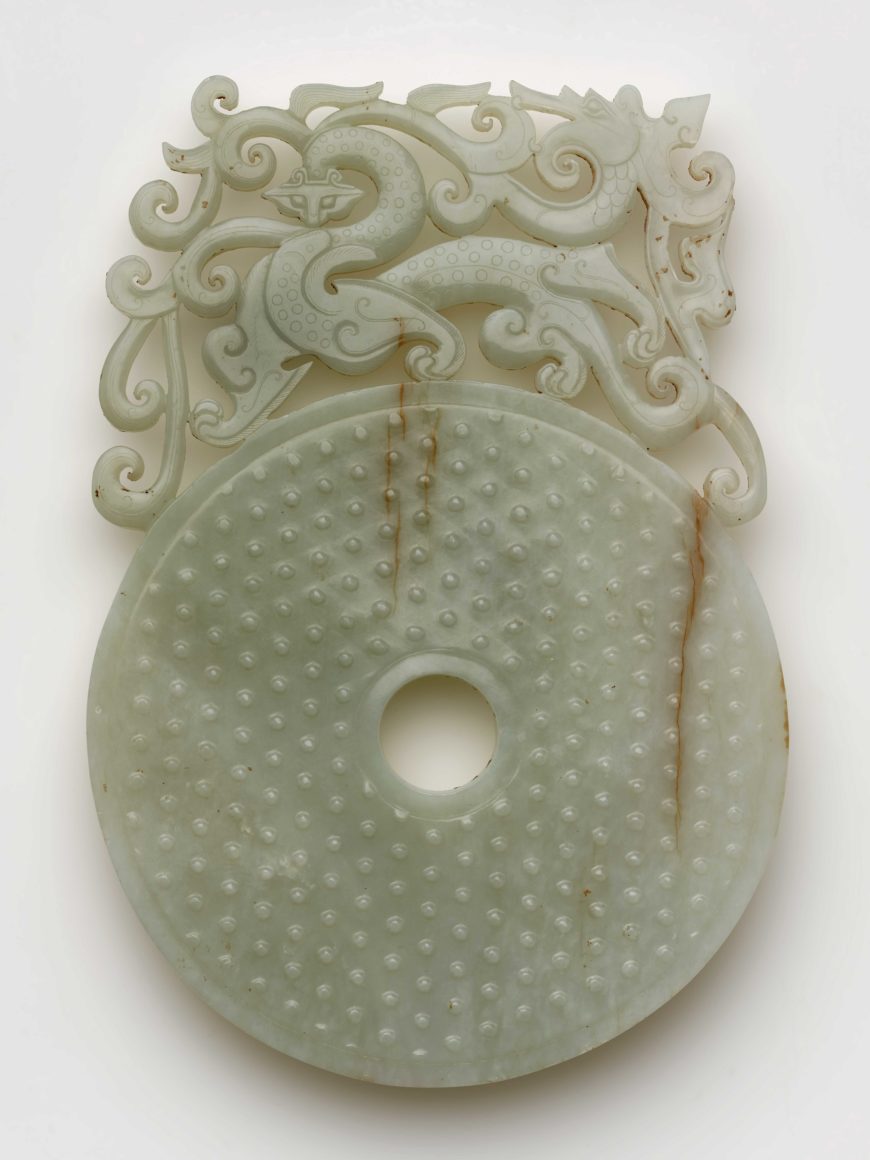
Disk (Bi)
Visual
Made of translucent jade (high tint green)
Figures depicted with grainy patterns
Has dragon with sweeping curves
Iconographic
Made in Han Dynasty
Sweeping curves represent clouds
Dragons represent peace, courage, and good luck
Disk represents imperial power

Tomb One (Lady Dai)
Visual
Made of wood, silk, charcoal, clay, etc
Made of 5 compartments, 4 w/ furnishings
Last box is resting coffin painted with lacquer (black, red, & white)
High intensity red background
Has dragons & predators
Iconographic
Made in Han Dynasty
Largest of 3 tombs, showing her significance
Layers of charcoal and clay used to keep it in perfect condition
Use of lacquer shows her high status (was more valuable than bronze)
Painting depicts Dai’s journey in the afterlife
Contorted animals guide Dai in the afterlife

Silk Banner
Visual
T-shaped painted with rich mineral pigment
Has interlacing animals
Shows celestial world and tale of Chang’e and husband
Naturalistic & idealized portrait of Lady Dai in middle of banner
Lady Dai in hierarchical scale w/ decorative clothing (status)
Iconographic
Made in Han Dynasty
Important example of naturalistic Chinese art
Made to lay face down on coffin, symbolizing the afterlife
Story of Chang’e symbolizes the journey to the afterlife & the hope for immortality
Portrait is the first Chinese portrait